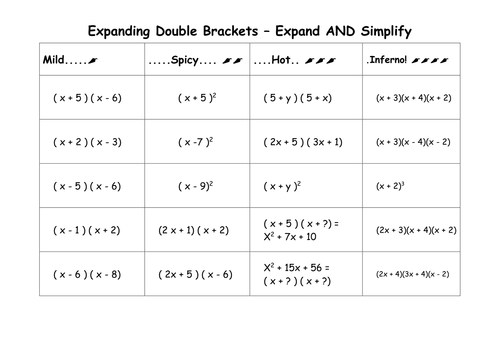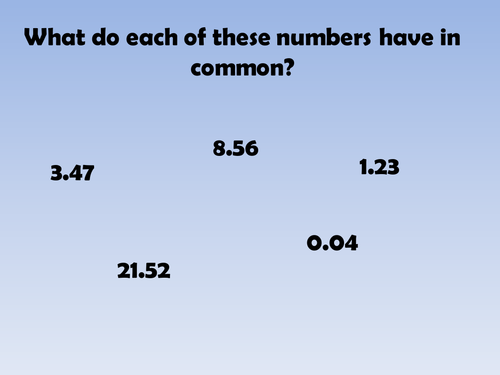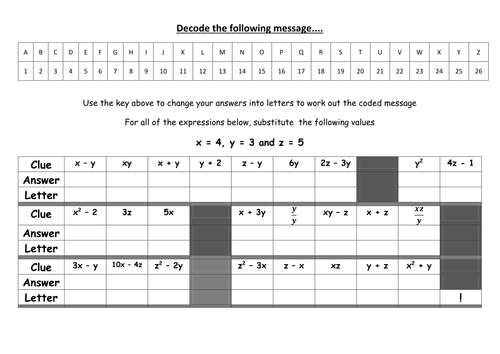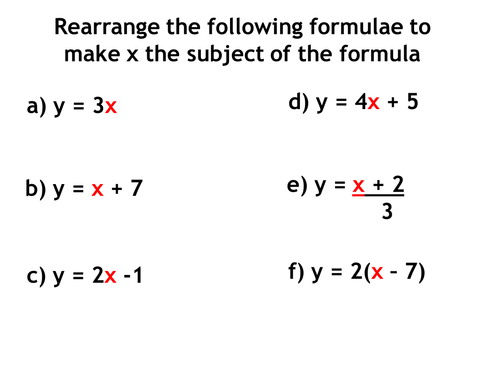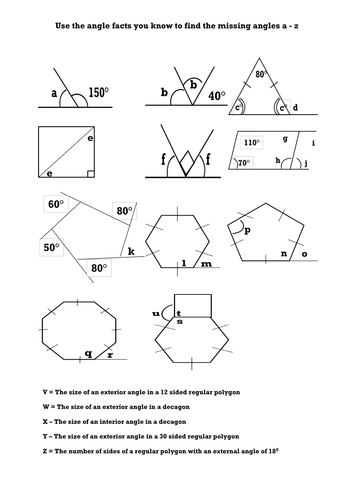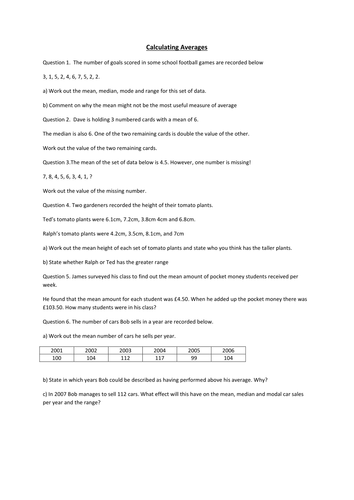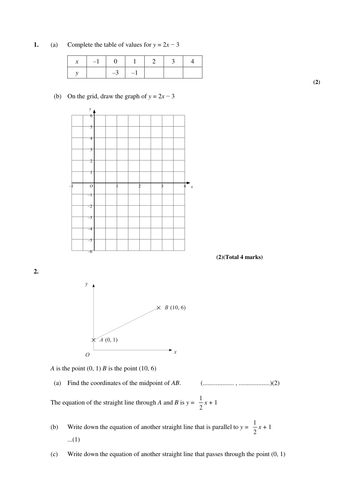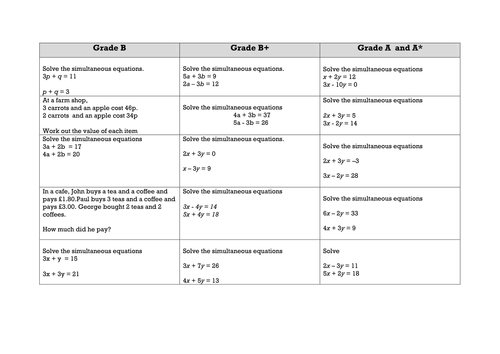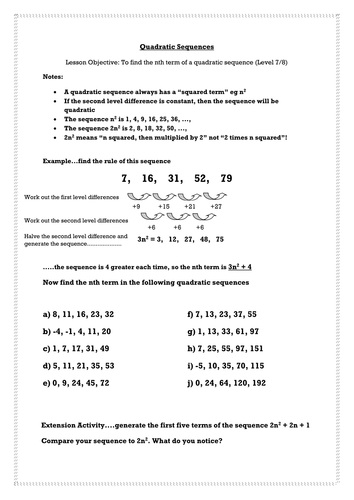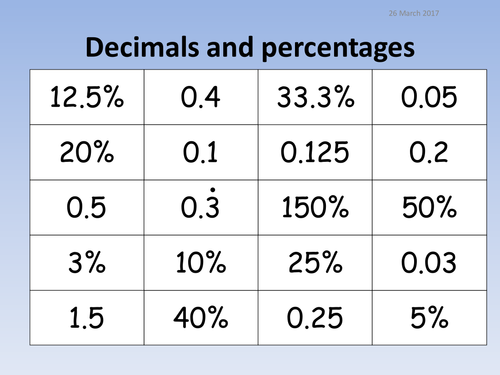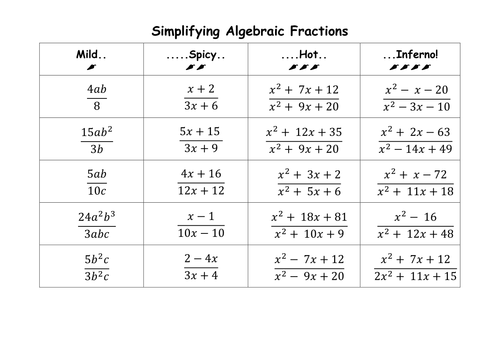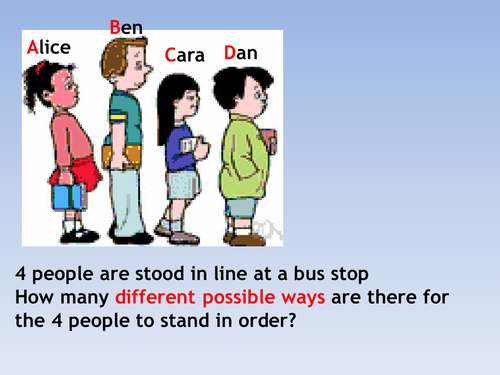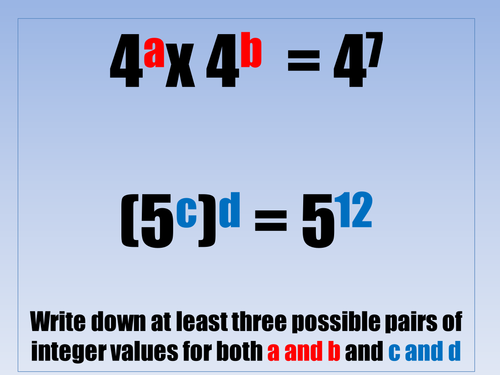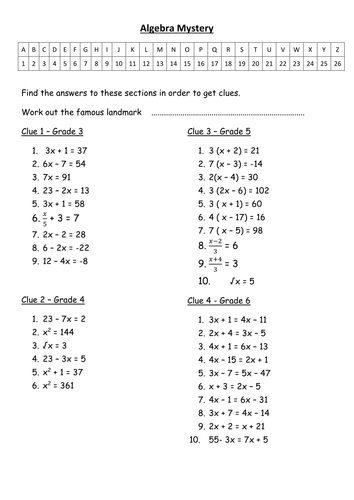
87Uploads
407k+Views
411k+Downloads
All resources

Expanding and Simplifying Expressions
A differentiated New Style GCSE lesson on expanding and simplifying expressions, with some work on expanding three binomials.

Multiplying Fractions
A nice clear powerpoint with some practical problems, ideal for lower ability students

Upper and Lower Bounds
New Style GCSE lesson to work with calculations involving bounds. You will need some indepdent worksheet - I use the section in the edexcel text or exam questions.

Algebraic Expressions and Equations - Team Activity
An activity designed for students working in teams. Initial starter on Whiteboard, then students must enter the correct codes into the excel spreadsheet (correct answers turn cells green) in order to be the best performing team. I only let the students input their answers into the spreadsheet three times during the lesson and only make one correction.

Rearranging Formulae Revision
A straightforward powerpoint to take students through the basics of rearranging formulae. The lesson starter involves solving equations to get students into the frame of mind to consider inverse operations. The powerpoint also includes some exam questions including more difficult examples where the subject appears twice. Some students might require some reminders on factorising and expanding within the lesson too.

Missing Interior and Exterior angles in Polygons
A two lesson set of notebook files covering finding the exterior and interior angles of regular polygons

Averages and Cumulative Frequency - Complete Unit of Work
A complete unit of work covering averages from a table, estimated average, cumulative frequency and box plos

Straight Line Graphs - Three Lesson Block
A series of notebook files for teaching straight line graphs, with a homework and some starter activities. See me "Alien Zapping" resource for further straight line graph activities

Solving Simultaneous Equations (Both Linear)
A complete lesson on how to solve simultaneous equations, plus a differentiated worksheet

Generating Quadratic Sequences - Investigation
A lesson to introduce Quadratic sequences as part of the new 9-1 GCSE Content. I approach this topic by getting the students to generate n squared, 2n squared etc and find the second level difference for themselves rather than demonstrating this from the outset.

Codebreaker Activity - Factors, Multiples, Squares, Primes
An exercise designed to recap or revise all areas of number work that involves HCF, LCM, Powers, Roots etc suitable for GCSE or KS3 students. I use this as an end of unit assessment and either make A3 sheets to share or individually as a homework. The answers will spell a question that then needs to be answered and can be modelled at the end of the lesson as a plenary. A simple extension task is to ask students to test each other and make their own codes - I have also set this for homework in the past.

GCSE Reverse / Compound Percentages Revision
A revision powerpoint for the two main ways in which percentage understanding tends to be assessed at GCSE - reverse percentages, and repeated percentage change. This could also be split into two lessons if time is not an issue. Two methods of finding reverse percentages are inlcluded, along with an activity to get students thinking about the decimal multiplier effect.

Simplifying Algebraic Fractions
A straightforward lesson and differentiated or staged worksheet for simplifying algebraic fractions. We start with simple multiplication / division and then through expressions which require factorising. Perfect for Middle ability Y11’s, a brighter group might want some further examples of non-monic quadratics as an extension activity.
October 2021. Updated to include a powerpoint version for non Notebook users.

Probability Trees Revision
A revision PowerPoint designed for KS4 students. The starter concerns the product rule which is now included in the 9-1 scheme. The lesson progresses through basic completion of trees to wordy "without replacement" style questions. A simple plenary to draw out a misconception and to reinforce multiplication of independent events.

Surds - Revision Powerpoint
A powerpoint (with an initial starter involving indices) that covers why we use surds, simplifying surds, multiplying and rationalising. I have been using this with Year 11 intervention groups. There are also some example exam style questions and problem solving tasks. You may need some additional work to turn this into even a two or three lesson block.

Solving Equations with Subject on Both sides
A complete lesson on solving equations, with a literacy element in the worksheet. The starter gets students to form expressions of equal value which is the basis of how you can demonstrate solving, and then some useful ways to explain using bags of sweets and loose sweets!

Expanding and Factorising - Three Lesson Block
Covering the basics of algebraic multiplication and expansion of single brackets right upto double brackets. Worksheets are split into different abilities to allow for multiple approaches to independent work.

Laws of Indices
Upto two lessons worth of work on simplifying expressions involving Indices. By the end of these lessons students should be able to simplify multiple terms.

Types of Number - Factors, Squares, Multiples, Primes
A way of combining recognising types of number for lower ability students in KS4 or KS3 with the new Venn Diagrams element of the KS4 maths curriculum. You may also need some bingo books to use as a plenary activity for this lesson - see my Primes Bingo Resource.

Area and Volume Scale Factors
A notebook file for GCSE students detailing how to find the area / volume of similar shapes

